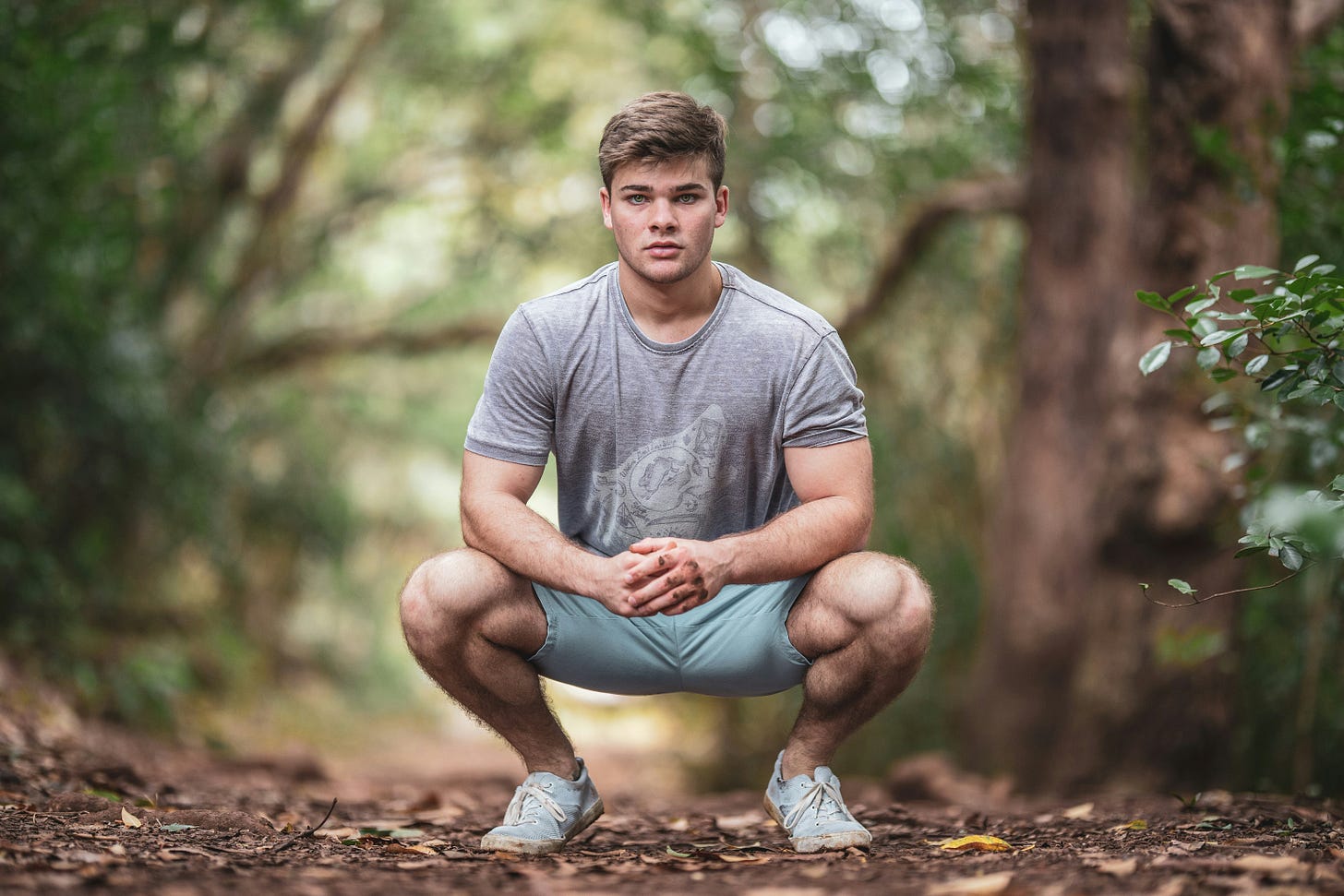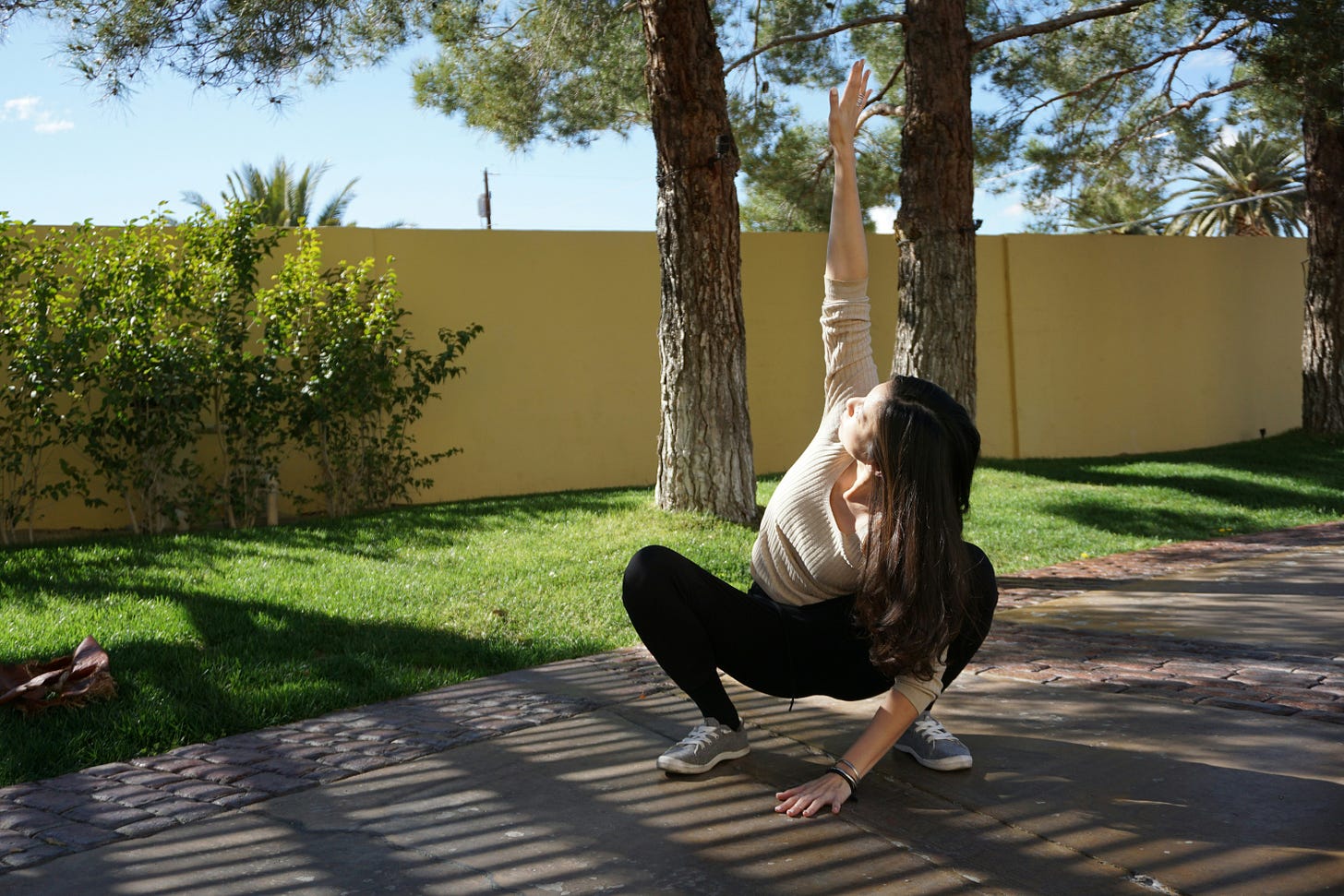Bodyweight Squats: Why This Simple Exercise Is Ideal For People Of All Ages.
Bodyweight Squats: The Simple, Fast, Effective Routine.

Looking for a simple yet effective exercise that will improve your strength, stability, and mobility?
Then, try the bodyweight squats.
It targets multiple muscle groups and can be adapted for various fitness levels, so there are no excuses, no matter your fitness level or age.
Another fantastic feature is that bodyweight squats can be done quickly and for any number of repetitions; of course, more is better.
If more incentive is needed, here are the top 10 benefits of doing a simple bodyweight squat.
A simple bodyweight squat works your quadriceps, hamstrings, glutes, and calves, the muscles you need for walking, standing, and climbing stairs.
Bodyweight squats engage stabilizer muscles and enhance proprioception (your sense of body position), reducing the risk of falls.
Moving through a squat's full range of motion improves hip, knee, and ankle flexibility.
They also lubricate your joints by increasing synovial fluid production, which can help prevent stiffness and reduce joint pain over time.
Your abs, obliques, and lower back stabilize your torso during squats, improving posture and may reduce back pain.
You are mimicking your everyday movements, like sitting and standing, by doing squats, which can help maintain your independence and strength.
When performed as a high-rep or high-intensity routine, bodyweight squats can burn calories.
Squats' weight-bearing nature strengthens bones in your spine, pelvis, and legs, reducing the risk of osteoporosis.
Bodyweight squats can be done without equipment.
This exercise can be done regardless of fitness level with a different approach, such as wall squats, jump squats, and single-leg squats.
Let's break out some science and break down the squat:
Science thing over the top?

The Lowering Phase Of The Squat (Eccentric) -
The muscles you activate -
The quadriceps control your descent by contracting to resist gravity. The glutes and hamstrings engage to decelerate the hips.
Your joint action -
Your hips flex, the knees bend, and the ankles dorsiflex. Proper alignment ensures even force distribution across these joints.
Your core engagement -
The deep core muscles stabilize the spine, including the transverse abdominis and multifidus.
The Rising Phase Of The Squat (Concentric) -
The muscles you activate -
Glutes and quadriceps power your upward motion, with the calves assisting in ankle stabilization.
Your joint action -
Hips and knees extend while the ankles plantar flex slightly.
We can use some high-dollar words for a simple exercise, and suddenly, my brain hurts.
The video was created by the author and featured on my YouTube Home Style Fitness channel.
How many squats per day should I do?
There are no rules; the number of reps depends on your fitness level, goals, and physical condition.
As a guideline, try this -
If you are a beginner -
Start with 10–15 squats per set. Perform 2–3 sets a day.
Intermediate -
Aim for 20–30 squats per set, 3–4 sets daily.
Advanced -
Incorporate 40–50 squats per set or try variations like jump squats or single-leg squats for more of a challenge.
Some things to consider when doing squats -
Joint Pain -
If you experience knee or hip discomfort, focus on smaller ranges of motion or use a chair for assisted squats.
Alignment -
Ensure knees track over the toes to prevent strain.
Core Engagement -
Avoid letting the lower back arch too much at the bottom of the squat.
Disclaimer: Consult your doctor before beginning any new workout routine.

